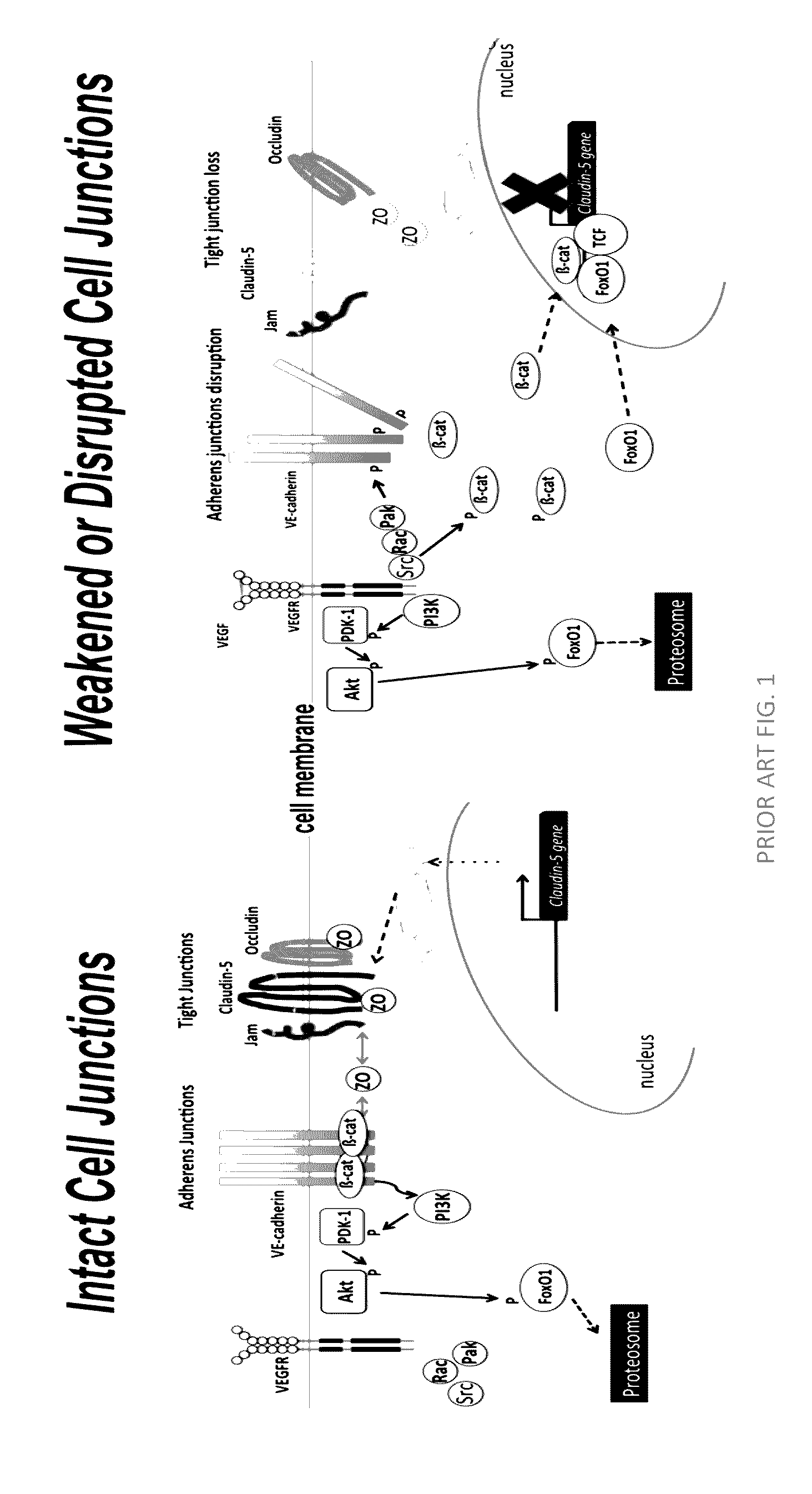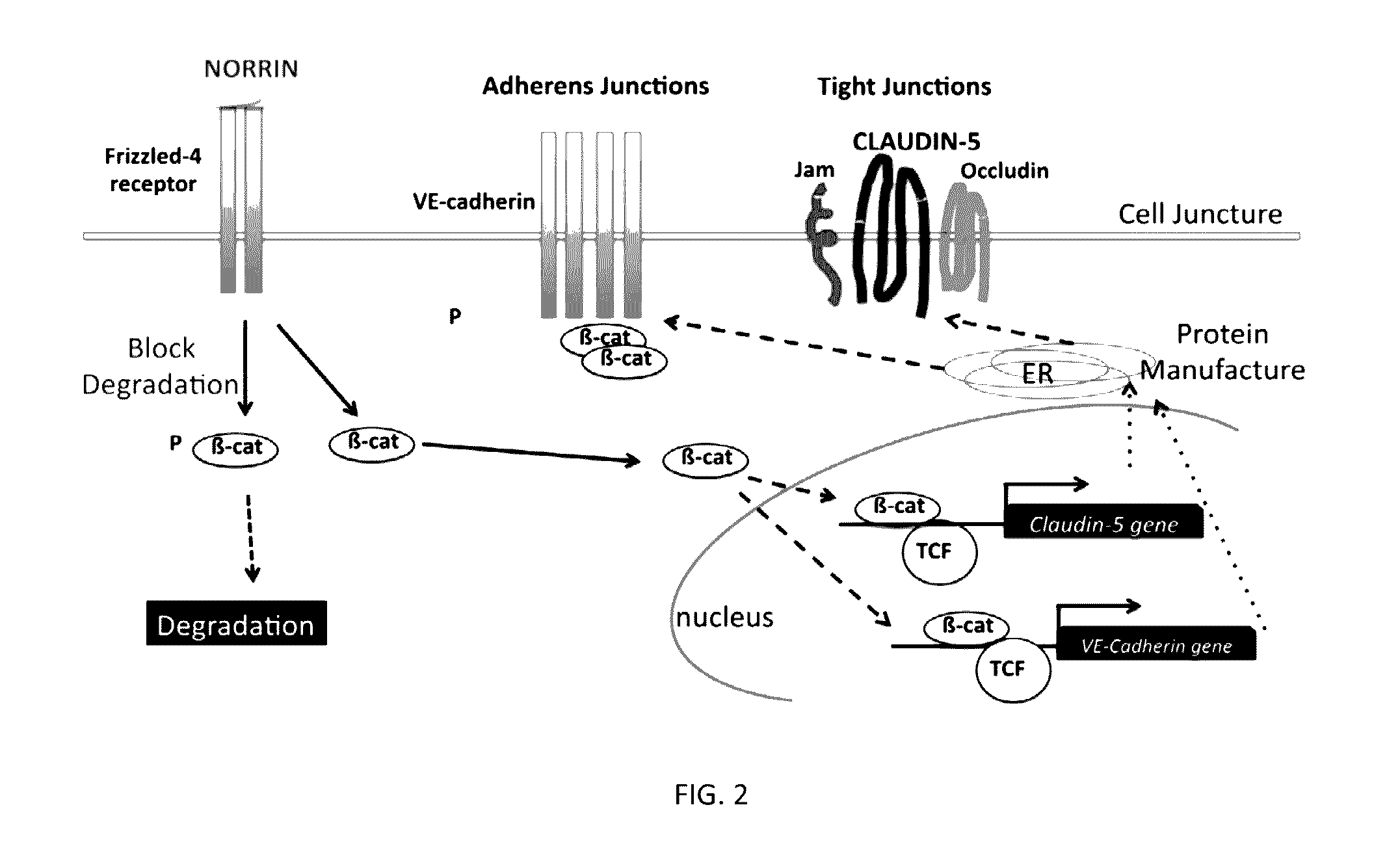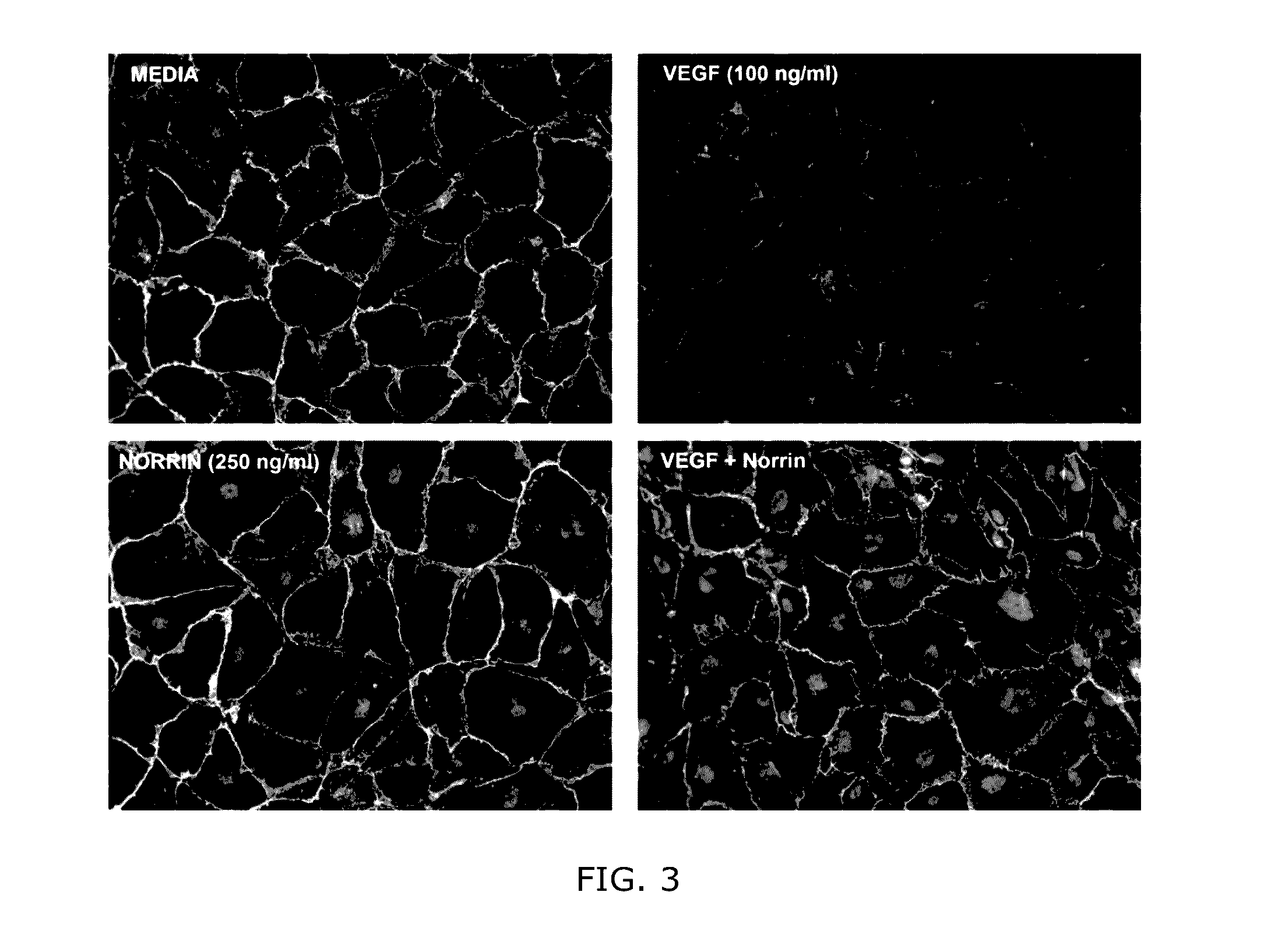Norrin regulation of cellular production of junction proteins and use to treat retinal vasculature edema
a technology of junction proteins and neuronal vasculature, which is applied in the direction of angiogenin, peptide sources, antibody medical ingredients, etc., can solve the problems of macular edema, exudative retinal detachment, and little attention to addressing the weakened inter-cellular junctions in retinal vasculatur
- Summary
- Abstract
- Description
- Claims
- Application Information
AI Technical Summary
Benefits of technology
Problems solved by technology
Method used
Image
Examples
example 1
Immunostain of VE-Cadherin In Cells—VEGF Challenge
[0096]Human retinal microvascular endothelial cells (HRMECs) were cultured in DMEM supplemented with 10% (v / v) heat-inactivated FBS (Nichirei Biosciences Inc., Tokyo, Japan), 100 U / mL penicillin, 100 μg / mL streptomycin (Life Technologies Gibco, France. The cell cultures were incubated on collagen-coated tissue culture plates Transwell® (Corning, New York, N.Y.) in a humidified atmosphere of 5% CO, at 37° C.
[0097]HRMECs were cultured for 14 to 21 d on a Lab-Tek chamber plate (Corning). H2O2 (500 μmol / L) was administered to the basolateral side of the Transwell®. To some plates nothing was added (Control), or VEGF (100 ng / mL) or norrin truncate (SEQ ID NO: 2) (250 ng / ml) or both VEGF and norrin (100 ng / ml and 250 ng / ml, respectively) was added to the apical medium 30 min prior to H2O2 treatment. After 6 h of incubation, the cells were washed twice with cold PBS and fixed with cold acetone (Wako Pure Chemical Industries, Osaka, Japan) f...
example 2
Immunostain of Claudin-5 In Cells—VEGF Challenge
[0099]The process of Example 1 was repeated with mouse anti-human claudin-5 antibody at 4° C. overnight instead of anti-human VE-cadherin. After washing with PBS, the cells were incubated with dye-conjugated secondary antibody specific to the anti-human claudin 5 antibody then subsequently washed in PBS prior to being imaged using fluorescence microscopy.
[0100]Under control conditions, claudin-5 are localized to cell-cell boundaries of these cells as shown in the upper left panel of FIG. 4. After addition VEGF (upper right panel, FIG. 4) one can see a reduction in cell-cell adhesion molecules as well as a loss in the cobblestone morphology. However with the combination of VEGF and norrin (lower right panel, FIG. 4) the junction proteins and morphology were restored. The effect of norrin alone is noted (lower left panel, FIG. 4).
example 3
Claudin-5 mRNA Expression in Cells—VEGF Challenge
[0101]The process of Example 4 is repeated with the replacement of TGF-beta with VEGF as the challenge agent. The amount of claudin-5 mRNA detected is shown in FIG. 5 normalized to the media only control. Norrin is observed to increase claudin-5 expression levels beyond that of the media control.
PUM
 Login to View More
Login to View More Abstract
Description
Claims
Application Information
 Login to View More
Login to View More - R&D
- Intellectual Property
- Life Sciences
- Materials
- Tech Scout
- Unparalleled Data Quality
- Higher Quality Content
- 60% Fewer Hallucinations
Browse by: Latest US Patents, China's latest patents, Technical Efficacy Thesaurus, Application Domain, Technology Topic, Popular Technical Reports.
© 2025 PatSnap. All rights reserved.Legal|Privacy policy|Modern Slavery Act Transparency Statement|Sitemap|About US| Contact US: help@patsnap.com



